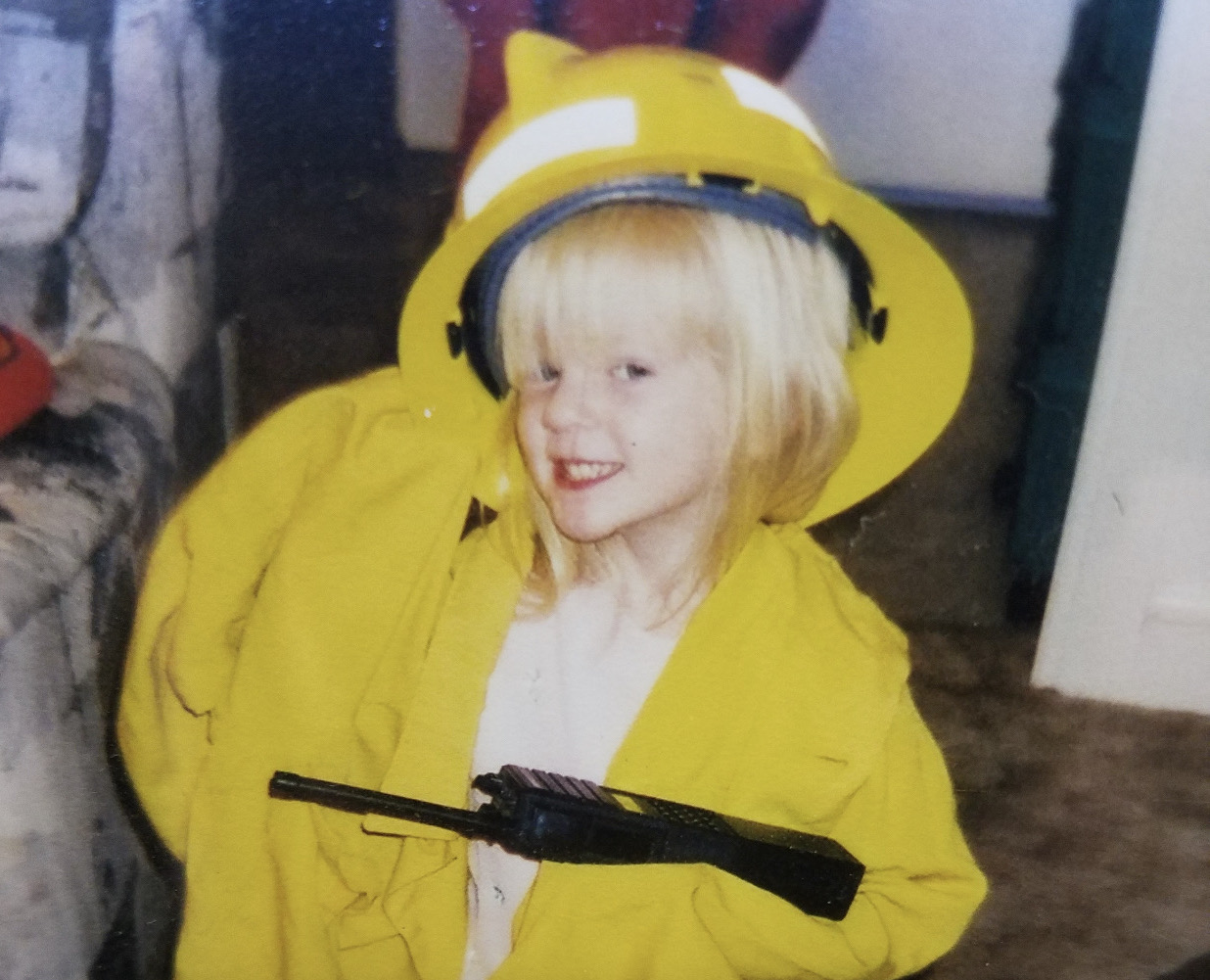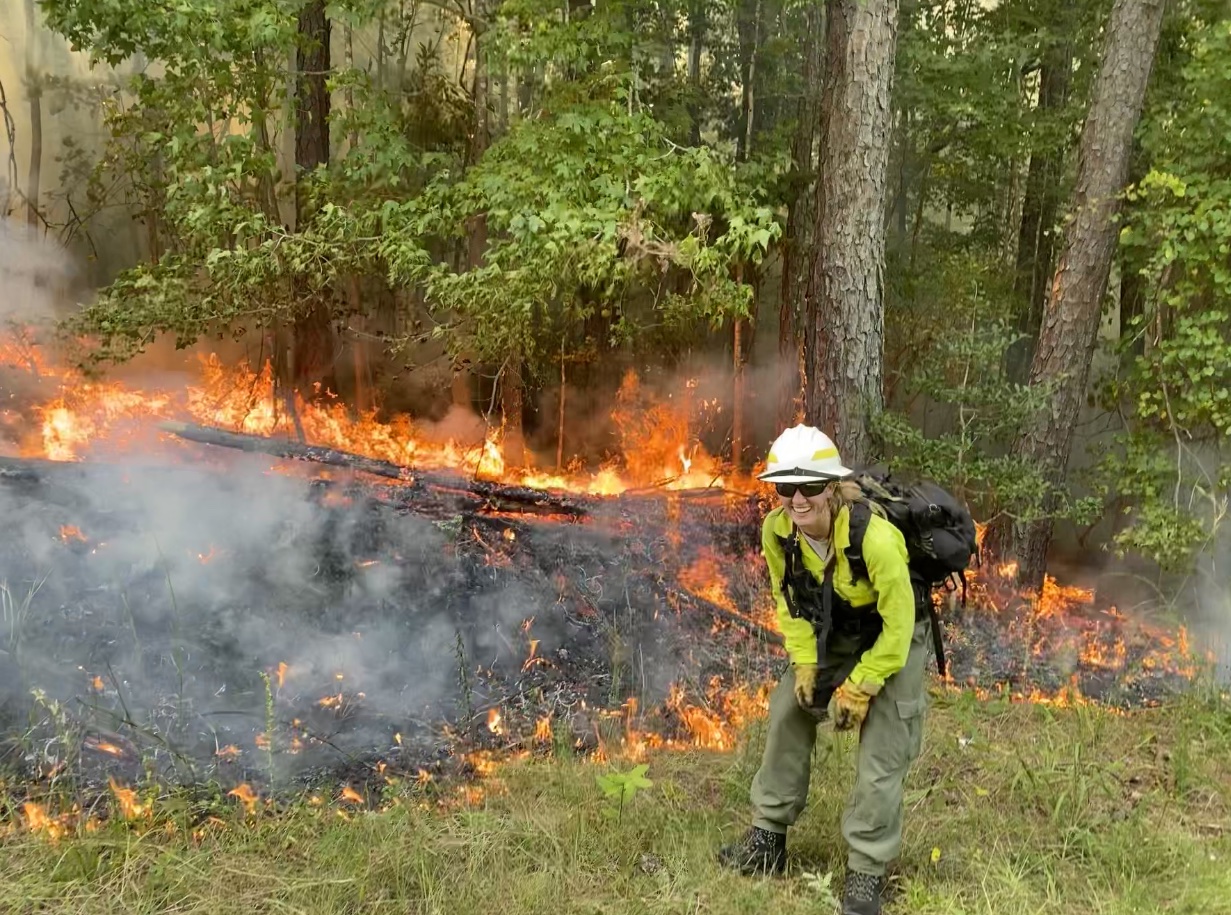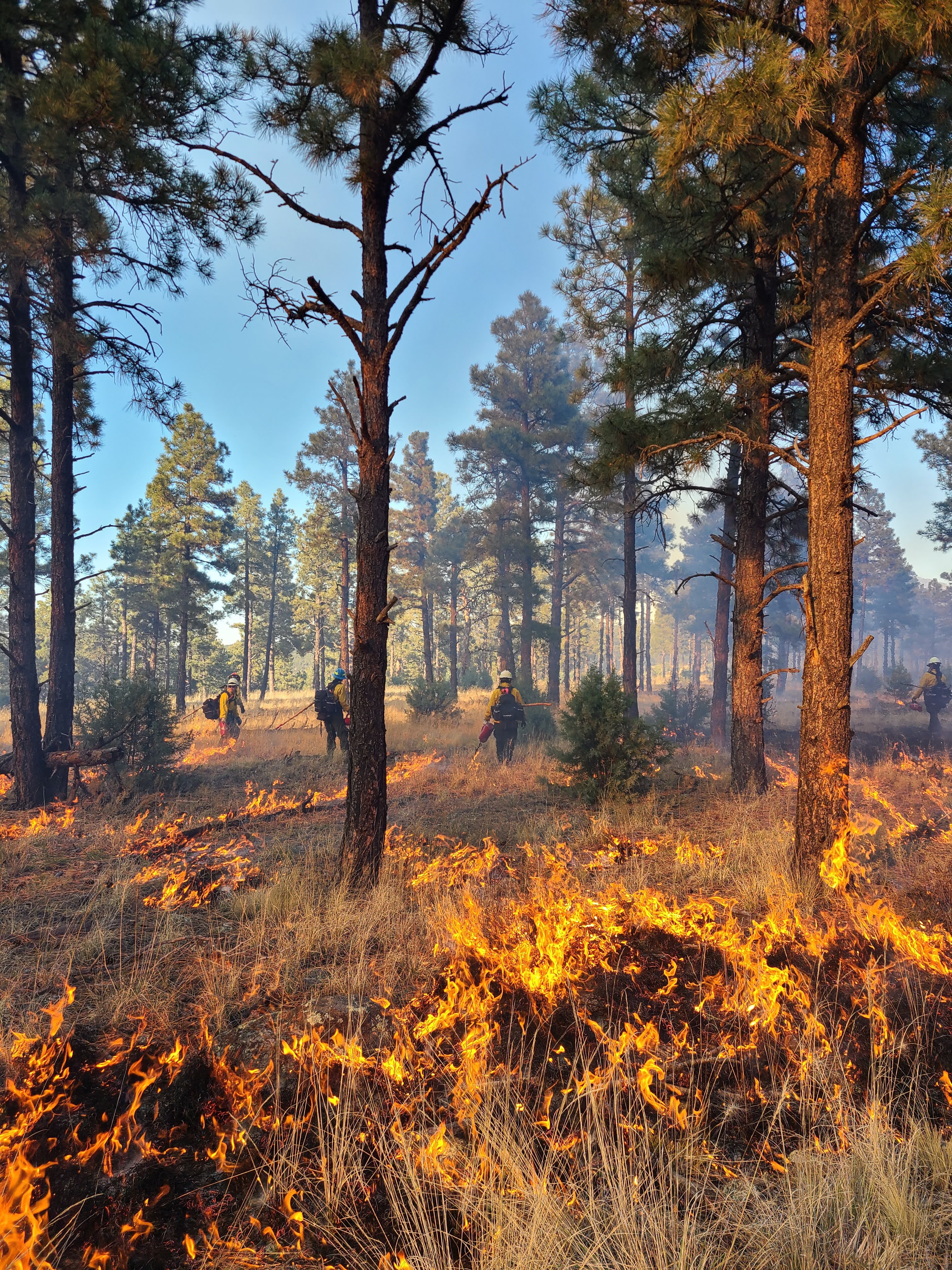Carrying the torch: female leadership in fire
March 21, 2023

By Kayci Willis

When I was a little girl, I would play dress-up in my dad's work uniform. His Nomex, or firefighting clothes; the typical bright yellow shirt, heavy duty fireproof boots, a hard hat, and a large radio. Well, little did I know, 20 years later I'd have my own. I'm a wildland firefighter and fire lighter. I implement prescribed burns, which are intentional fires set that are beneficial to the environment.

And I occasionally fight wildfires, which are the unplanned, uncontrolled fires that you see on the news sometimes. I didn't plan on being in this field, and in fact, my dad tried really hard to talk me out of it. He knew some things that I didn't at the time. The biggest thing being, there's not a lot of women in this field.
High-pressure environment
Only about 10% of wildland firefighters are women and this is because of the fire culture. Wildland fire has this bravado wrapped around it where firefighters are known as tough guys, and there's this idea that the more danger, the more life-threatening your work is, the more of a badass you are. This makes the field pretty hostile for women who don't fit the mold, and it creates a warrior complex, which is basically where women feel the need to go above and beyond the standards to prove themselves. One woman represents all women in this worldview, and this is a lot of pressure on women.
I'm sure you're thinking that sounds like a terrible work environment, and yeah, it can be. But it's also rewarding, important work that I and a lot of other women in this field are passionate about. It's also a space where we can and will make a difference.
I'm now a Firefighter Type 1, which means I'm in a leadership position. It's a lot of responsibility, and with so few female leaders to look up to, I have to decide what kind of leader I wanna be and what kind of legacy I want to leave behind. I'm going to be a confident leader. And for me, confidence comes from how I present myself, my body language.
Of course, saying there aren’t a lot of women in the field does not mean there aren’t any. I am lucky to have worked with several incredible women in this field. I am grateful for the lessons they taught me, not just about fire, but about how to stay true to myself and my femininity. I can be a badass and a girl at the same time.
Standing up and leaning in
One of the videos that we watched in the Executive MNR program is a TED Talk by Amy Cuddy about body language and how it shapes who you are. I didn't realize how true this was for me until I did some reflecting on it. When I first got into fire, I would shrink to make myself small. I would hide behind people to avoid getting called on to answer questions that I may not know the answer to, and to avoid being put into any sort of leadership position that was outside of my comfort zone. When I realized that I was doing this, and that I wasn't going to grow if I didn't get out of my comfort zone, I started taking up more space. I started standing in the front, and I got leadership positions. I got called on to answer questions and I knew the answers, and I did a good job as a leader. And that built my confidence in myself, and it built the confidence of others in me.
This job has challenged me physically, mentally, and emotionally. I have never had a more meaningful period of growth in my life and I am so grateful for the experiences I have had. I have become a better woman because of them.

Leading from where you are
In the XMNR program, we practiced addressing conflict in teams. If I’m going to be an effective leader, I need to address the five dysfunctions of a team right off the bat. In fire, we don't have the luxury of time, so this will have to be done fairly quickly. This includes building trust, getting through any conflict, building commitment, holding people accountable, and paying attention to the results. All of that is built into the fire system, but you still have to address it at the beginning.
I'm also going to be a respectful leader, and this is going to come out in an interesting way. In fire, we do after action reviews after every fire. In these meetings, women are often talked over and our feedback ignored. But as a leader, I now have the authority to ensure that every voice is heard, and I now have the confidence to speak louder. If someone tries to talk over me, good luck!
More than just making sure everyone speaks, it's important that everyone is heard. You have to listen to what is said, regardless of if it comes from your supervisor or your subordinates. And even more important is actually considering what was said and making those necessary changes. Don't let feedback just go in one ear and out the other. You actually have to do something.
Women in this field are often passed up for leadership positions and punished for whistleblowing problematic behavior. And this amounts to a lot of pressure on the remaining women to pick up where others left off and keep carrying the torch.
The torch is passed to me now, and it is a lot of pressure to represent all women anytime I put on my Nomex. But I remind myself that first, I'm a badass. And second, I can make a difference, and I will make a difference. My Nomex isn't for playing dress-up anymore. It's for walking through fire and coming out unscathed.

Kayci Willis graduated from the Executive Master of Natural Resources program at Virginia Tech in 2022 after completing baccalaureate studies at North Carolina State University. She continues to stay active in the fire community by working with The Nature Conservancy’s North America Fire traveling burn crew. She also is an editor for the North Carolina Prescribed Fire Council’s outreach materials.


